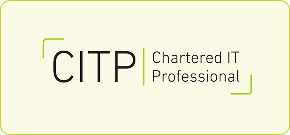Adem Yetim FBCS IntPE FIET explains how to start small, build trust and share success stories — letting AI handle the routine and people handle the meaningful.
In the early years of my coaching career, it would never have occurred to me to weave technology into the coaching room. Coaching, to my mind, was an unashamedly human craft: trust, empathy and the exchange of experience. Over time, though, a new companion took a quiet seat at my desk: artificial intelligence. I approached it cautiously. Would it make sessions feel clinical? Could an algorithm really understand a person’s knotty, lived challenges? Curiosity won. I ran small, low risk experiments — transcription here, a briefing there — and found that, used judiciously, AI can strengthen (not supplant) the human connection that coaching depends on.
How AI can enhance humanity
We often frame the debate as a contest: person versus machine. That lens is outdated. As Satya Nadella says, ‘AI is not about man versus machine, it’s about man with machine.’ The shift is from rivalry to partnership. In practice, that means allowing AI to do what it does best —summarising, pattern‑spotting, surfacing options — so the coach can do what only a human can: notice the hesitation before a sentence, sit with a silence, invite a bolder question. When the machine handles the admin and the analysis, the human can invest wholly in presence.
AI’s role in coaching and mentoring
Used well, AI tidies the edges of our work and sharpens its centre. Transcription and smart summarisation free me from note‑taking so I can maintain eye contact and listen without distraction. Research briefs help me enter unfamiliar industries with relevant context, enabling better questions from the start. Leaders can rehearse difficult conversations with AI‑driven role‑plays, then use human sessions for the deeper, more reflective work. And over time, pattern analysis of progress notes and feedback can highlight blind spots — say, recurring concerns about clarity or prioritisation — prompting precisely targeted development.
AI as a tool
AI isn’t one answer but a set of tools, each with its own value. Google Gemini fits neatly into Workspace, helping with research, notes and drafts. Grok, built into X, picks up community mood, follows debates and highlights fast-moving signals.
For you
Be part of something bigger, join BCS, The Chartered Institute for IT.
ChatGPT (GPT-5) brings the richest nuance — role plays, reflection, pattern analysis and testing phrasing for tough conversations. I often lean on it to rehearse dialogue or open new perspectives. Otter.ai adds real time transcription and sharp summaries, giving space for deeper listening and presence.
Together, these tools build continuity — helping mentors and mentees reflect, prepare and come back sharper. Like mentoring itself, this blend of support keeps the human connection at the centre.
The irreplaceable human touch
None of this replaces the alchemy of a trusted coaching relationship. AI can suggest useful prompts; it cannot read the temperature of a room, nor earn the kind of psychological safety that lets somebody speak honestly. That is our job. So I treat AI outputs as starting points, not conclusions — ideas to be tested against professional judgement and the client’s context. When the tool’s suggestions are too generic, we discard them. When they illuminate a pattern, we explore it together. The compass remains human.
How AI can support unification
For leadership teams, the promise is twofold: consistency and inclusion. Consistency, because AI can help standardise rhythms — pre‑work, reflection prompts, follow‑ups — so development is not left to chance. Inclusion, because always‑on micro‑support reduces the barrier to asking for help between sessions.
To adopt it wisely, start small: pilot with volunteers, gather feedback, tune the approach. Keep the governance light but firm — data privacy, consent, clear boundaries about what AI does and does not do. And share success stories so learning spreads across the organisation without hype.
In the end, the best partnership is simple: let AI carry the load that distracts, and let people carry the work that matters. When we do, coaching feels more human, not less, because we’ve given our full attention back to the person in front of us. AI may be the tuning device in the orchestra, but the music still belongs to the musicians.
Take it further
Interested in AI ethical issues? You can download BCS' full report Trustworthy technology: meeting society's expectations for AI to read recommendations in full and discover insights from survey respondents.
You can also explore BCS' books and AI courses:
- The Psychology of AI Decision Making: Unpacking the ethics, biases, and responsibilities of AI
- Artificial Intelligence Foundations: Learning from experience
- Artificial Intelligence Foundation Pathway
- BCS Essentials Certificate in Artificial Intelligence
- BCS Foundation Certificate in the Ethical Build of AI












